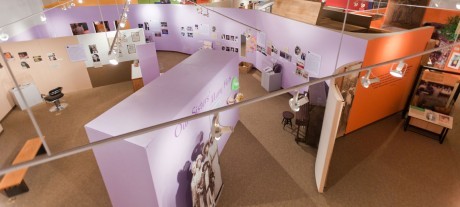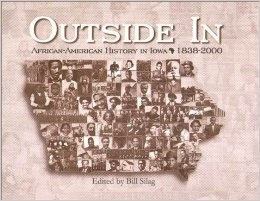African American Museum of Iowa
Introduction
Text-to-speech Audio
Established in 1994, the African American Museum of Iowa gives a look inside the enriched history of African Americans in the state of Iowa. African Americans have been settling in the state before it actually became apart of the United States. Their history in Iowa revolves around mainly their time as slaves to helping the state grow as farmers and protecting it by enlisting in the military. The African American Museum of Iowa is a museum that's dedicated to being the number one source of African American history, heritage, culture, and their contribution to the history of Iowa. It displays chapters in 8 communities across the entire state of Iowa. In 2008, the museum was devastated by a flood and the first floor was completely flooded with over 5 feet of water and caused over $1 million worth of damage.
Images
Picture of front of museum

Picture of Gale Sayers changing exhibit

Pic of the cover of the book History of African Americans in Iowa

Backstory and Context
Text-to-speech Audio
Iowa has long had a rich African American history stretching back centuries ago to 1804 when a slave entered the state with the Lewis and Clark expedition as they were exploring the Louisiana Territory. African Americans have long been involved in all aspects of Iowa including wars, economics, and public education. Dred Scott, a famous slave that was denied citizenship into the United States based on the decision decided in the Supreme Court during Dred Scott v. Stanford, lived in the city of Davenport. Scott is also known for his various attempts at buying his family’s freedom or trying to remove their status as slaves in district courts. Iowa historians have come together to create a museum that preserves the heritage and history of African-Americans in their state.
The African American Museum of Iowa was founded in 1994 by the Mount Zion Missionary Baptist Church. They pursued the goal of preserving African American heritage in the state in celebration of Black History Month. Four years later in 1998, the museum hired it’s first employee, Joseph McGill, who would serve as Executive Director. In May 2003, Thomas Moore would serve as interim Executive Director, but was dropped the same year in November. Another version of the museum was opened in September 2003 and highlighted one of it’s notable exhibits named Doorways: A History of African Americans in Iowa.
The main museum has two large scale exhibits that depict the history and heritage of the African American history in the state of Iowa. Covering anything from the state’s first slave that was owned by William Clark and took part in the famous Lewis and Clark expedition to other different types of artifacts. With 70 feet of archives and 200 oral histories stacked together inside the museum, the educational opportunities are endless for researchers. It also includes the Gale Sayers changing exhibit gallery, which displays a new exhibit every year.
The African American Museum of Iowa has been in business for over 20 years preserving African-American history. It includes an enormous wealth of African American history in the state of Iowa and is the leading museum in this field in the state. There's been a lot of hard work put in from a lot of different volunteers to make the museum possible. In 2011, the museum served over 52,000 visitors with guided tours of each exhibit. There is also a summer camp and various educational programs for children to attend in order to learn more.
Sources
“About,” African American Museum of Iowa. Accessed July 7th 2021. https://Blackiowa.org/about/
”African American Museum of Iowa,” Cedar Rapids Tourism Office. Accessed July 7th 2021. https://www.tourismcedarrapids.com/directory/african-american-museum-of-iowa-museum-historic/
“African American Museum of Iowa,” Silos and Somkestacks. Accessed July 7th 2021. https://www.silosandsmokestacks.org/attraction/african-american-museum/
